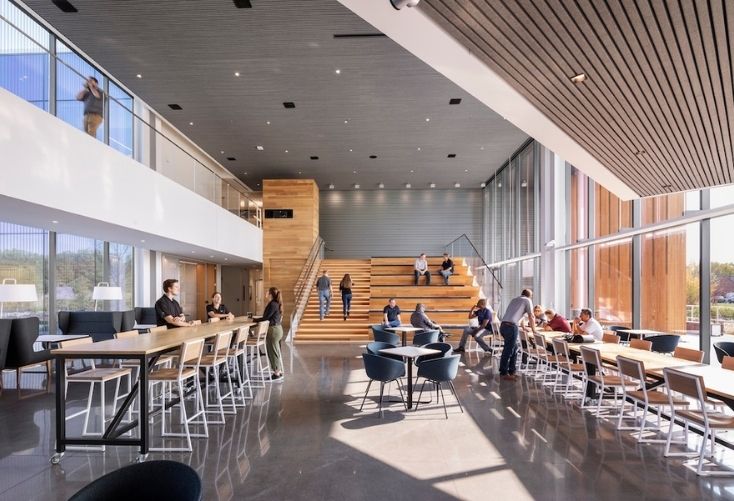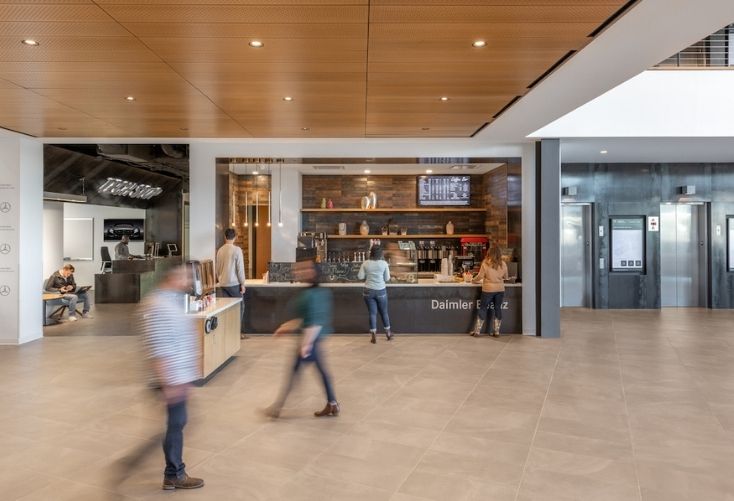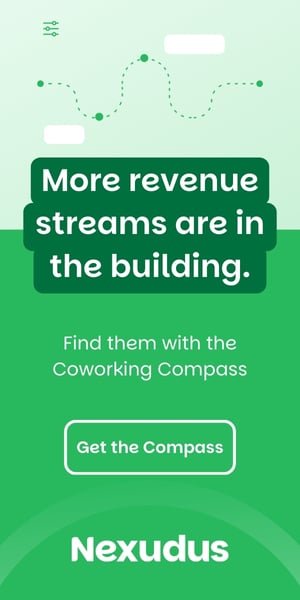- Rather than sweeping employees back to the office, SmithGroup settled on an activity-based mindset for hybrid work.
- This empowers teams to plan their in-office time to prioritize activities that offer the biggest benefits for in-person engagement.
- SmithGroup’s Mark Adams and Amy Clark share first-hand experiences of their agile approach and what makes it work.
This article was written by Mark Adams and Amy Clark, and was originally published on Work Design Magazine.
Since March of 2020, SmithGroup has remained flexible and agile—cautious to avoid firm deadlines for returning to the office and empathetic to employees’ needs on various levels. Once 2022 came around, we settled on an activity-based mindset for hybrid work. Firm leadership asked employees to work with their leaders and plan their in-office time to prioritize activities that offer the biggest benefits for in-person engagement. Aside from a few key leadership groups, we do not require staff to be in the office for a designated amount of time each week. With an agile approach, here is what’s working for our firm and clients as we continue to evolve to meet today and tomorrow’s needs.
The HR Perspective
The importance of strong human resources support was apparent throughout the pandemic and continues to remain vital as the power shift from employers to employees continues to grow. Here’s how we are responding:
Feedback Loop. Continuous listening and learning from staff feedback allows leadership to best understand how and where team members want to work and where friction points lie. The latest feedback loop is a staff survey deployed after an employee works on-site. The quick survey asks team members three questions: 1) Why were you in the office? 2) What did you accomplish? 3) How did it go? These surveys give the firm real-time insights to shape future policy and space design.
A Little WFH Help. HR identified two types of staff: hybrid and full-time remote. Regardless of status, each employee is given a $1,000 stipend to set up their home office. Full-time remote employees are further supported by receiving a full technology set-up (high-quality headphones, docking station, laptop and large monitor) traditionally only found in the office. As with any change, transitioning to hybrid work can be difficult. To help, the firm has a broad collection of emotional and wellbeing support resource offerings.
Onboarding. Evolving and improving our onboarding process was also deemed critical. While onboarding is more important than ever, it is also more difficult and nuanced than in the past. Employees are proving to be more tech savvy than pre-pandemic, which is helpful to the process, but making early connections with team members and supervisors is more impactful when done in-person.

Tech, Tech, Tech
Pre-pandemic, our firm had 77-percent of staff working in the office full-time; post-pandemic, that figure has dropped to less than 2-percent of employees working in the office full-time. Moving to a fully-cloud-based approach to data storage ensures staff can access information and complete any task anytime and anywhere. Technology remains paramount as we move through this unprecedented transition. Below are some ways we are adapting:
Colleague Finder. Our IT group created Colleague Finder, a tool which helps employees find another team member, reserve a workspace in the office and view the current occupancy stats at any office.
Technology Hub. This new digital hub is a one-stop-shop for all tools and technology. This searchable database ensures employees have access to a wide array of technology tools at their fingertips.
Reframing IT’s Service Approach. Gone are the days when IT issues could be solved by walking over to someone’s desk between 9:00 a.m. – 5:00 p.m. Monday through Friday. Enter the IT Community and Helpdesk deployed via Microsoft Teams in which problem solving is streamlined allowing employees to get quicker responses during expanded hours.
Standard Meeting Times. As any knowledge-based worker knows, the number of meetings dramatically increased throughout the pandemic as team members had to be more intentional about collaboration. In an effort to give employees some breathing room between meetings, our IT team changed the default meeting times to 25 or 50 minutes, as opposed to traditional 30-minute or one-hour appointments. Even though this seems minor, our CIO said he’s never had so many emails from team members expressing gratitude when the company rolled out this small change.

Space Matters
As an integrated design firm, we understand the importance space plays in one’s physical office experience. No employee wants to spend their days in an office that feels or functions poorly. With so many changes to work, we have set out to create highly functional spaces that exude flexibility, equity, and a seamless user experience.
New All-Staff Meetings. Gathering as a collective has a new feeling now that some colleagues are attending in-person while others appear on-screen. We are in the process of revamping its all-staff spaces across our locations for more equitable and engaging meetings and events. Reconfigurations include different layouts, new furniture solutions, additional technology (microphones, cameras, screens, etc.) and an honest analysis of the user experience for both types of attendees.
Collaboration Spaces. With the rise in meetings, some of our offices are also finding themselves short on small meeting spaces. In our Ann Arbor location for example, which was designed in 2011, we’ve found that when the office is at only 35-percent occupancy meeting spaces are fully booked. As we continue to analyze occupancy and survey data, we will right-size meeting space in each location.

New Offices & New Ways of Working. Over the last few years, three of our offices have undergone major renovations or moved into entirely new spaces. As with anything, there is no one-size-fits-all solution. Below are some highlights to the various approaches:
- Flexibility for Phoenix. Without a full renovation in nearly 20 years, our Phoenix office sought to improve the employee experience and better facilitate work. Phoenix employees reported that they were satisfied with remote work overall but were struggling to cultivate relationships with colleagues, engage in meaningful collaborative activities and found it challenging to connect with office managers and leaders when working remotely. The newly renovated office focuses on flexibility, transitioning from 100-percent assigned seating to 90-percent unassigned seating. To promote team-based collaboration and facilitate seamless flow of activities, teams will be able to reserve select areas throughout the office for extended periods of time.
- Historic Landmark Evolves in Detroit. Once occupying four floors in the city’s historic Guardian Building, our Detroit office has consolidated its operations to accommodate 30,000-gsf of space across two floors. This new approach has become a model for agility and choice. Each floor is separated into zones—from individual and quiet workstations to social collaboration areas—giving employees the ability to choose their environment based on work-style preference and the task at hand. This new office is a laboratory for the modern workplace, with state-of-the-art technology, a communicating stair to encourage physical movement and working labs to test out materials, new technologies and more. The office serves the firm’s new hybrid approach seamlessly, offering plenty of small-group meeting rooms and huddle spaces scattered throughout the floors. While there are still plenty of individual workstations, the majority of seating is in collaboration zones to encourage employees to interact, brainstorm and innovate together.
- Social & Collaborative Destination in Boston. Here, a staff survey revealed that 70-percent of employees had one-way commute times lasting 40 minutes or longer. Data revealed that 89-percent of employees were satisfied working remotely, but the majority overwhelmingly missed the social interaction and collaboration afforded by the office. When it came time to renew its lease, leadership pivoted and relocated its operations to a smaller floorplate in Boston’s Seaport District. The new office provides space for a range of social, interactive, and collaborative activities that employees missed, balanced by areas for quiet and focused work—giving staff flexibility and choice to select the right setting for each task.

Insights From Client Engagements
While so much has changed in the last 27 months, we believe that the office environment is a valuable strategic asset hasn’t wavered. Successful growth strategies will continue to require place-based solutions that enable people to come together and innovate in healthy, inspiring, and high-performing spaces. Let’s take a quick look at how some of our innovative clients are adapting to the new world of work.
The Push to Free-Address. Free-address—an unassigned/desk-sharing model that maximizes use and provides broader choice for users all while providing flexibility—is here to stay. From professional service firms to research and development organizations to apparel brands and everything in between, companies are adopting this new model. Mobility factors (headcount to individual seat count ratio) ranges from 4:1 to 1.2:1. Regardless of the adoption rate, benefits to this approach include space consolidation or simply more efficient space-use based on the needs of on-site activities.
Amenities Abound. Employers are exploring a new generation of amenities and differentiators that will entice staff to return to the office while keeping them happy, healthy, and engaged. At the Mercedes-Benz Financial Services Headquarters in McKinney, Texas employees have access to an on-site coffee bar with barista, full-service kitchen and various outdoor spaces with lake views. At LinkedIn Regional Headquarters in Detroit, Michigan, employees enjoy a wide range of amenities including a mindfulness room and floor-to-ceiling murals and art installations created by local artisans. At the ZEISS Michigan Quality Excellence Center in Wixom, Michigan, team members have access to outdoor courtyards and terraces and a pristine landscaped campus and adjacent preserved wetlands.

Pilots Over Perfection. With all of the changes the pandemic ushered in, some clients are hesitant to make companywide modifications too soon. Enter pilot projects. For an international financial institution based in the nation’s capital, we developed a pilot project framework and appropriate feedback loops to gather data and continue to improve solutions ultimately adaptable to their ever-changing standards.
New Approaches for Real Estate. We reengaged with Valley of the Sun United Way to strategize a whole new approach to space use. The goal: serve as a resource for various Phoenix, Arizona non-profits hit hard by the pandemic and forfeiting their offices due to cost and usage. The solution: reconfigure the already flexible space to create new meeting spaces, open workspaces, and additional collaboration spaces. The new pseudo co-working environment will provide these organizations with the space they need for much less cost and without the burden of standard leases. The space operates like a non-profit think tank where idea sharing is fostered through design.

Ready For The Next Phase?
From human resources to technology to space, everyone agrees the future of work is multifaceted and complex. Determining the right solutions for your organization starts with asking the right questions and identifying which challenges need to be solved. What feedback loops need to be created? Like ours, many organizations are testing and studying during this period of change. Take the time to observe, evaluate and make the appropriate changes for your company and people. Organizations that create environments to support both people and the business strategy through fostering engagement and innovation will ultimately win.


 Dr. Gleb Tsipursky – The Office Whisperer
Dr. Gleb Tsipursky – The Office Whisperer Nirit Cohen – WorkFutures
Nirit Cohen – WorkFutures Angela Howard – Culture Expert
Angela Howard – Culture Expert Drew Jones – Design & Innovation
Drew Jones – Design & Innovation Jonathan Price – CRE & Flex Expert
Jonathan Price – CRE & Flex Expert














